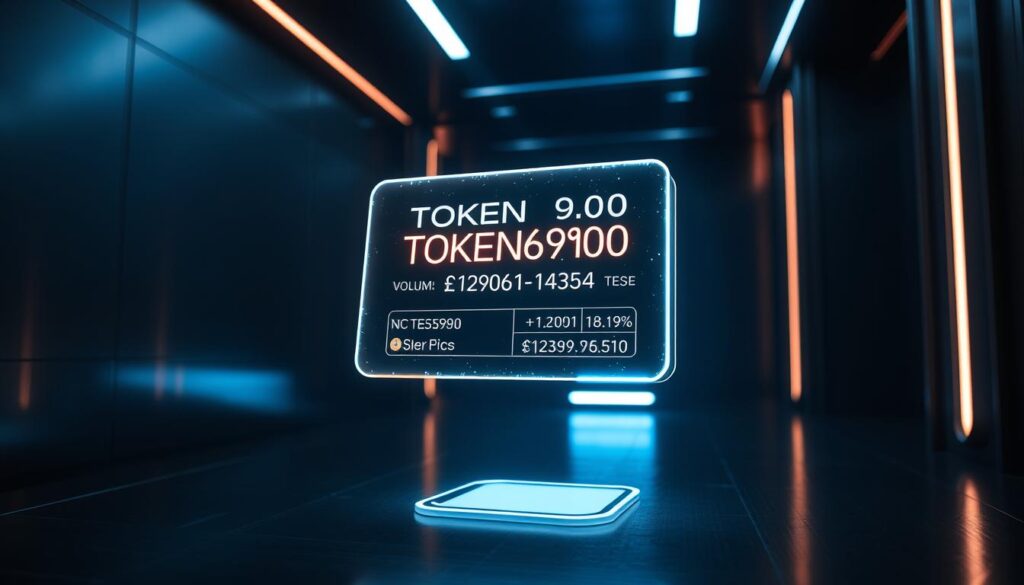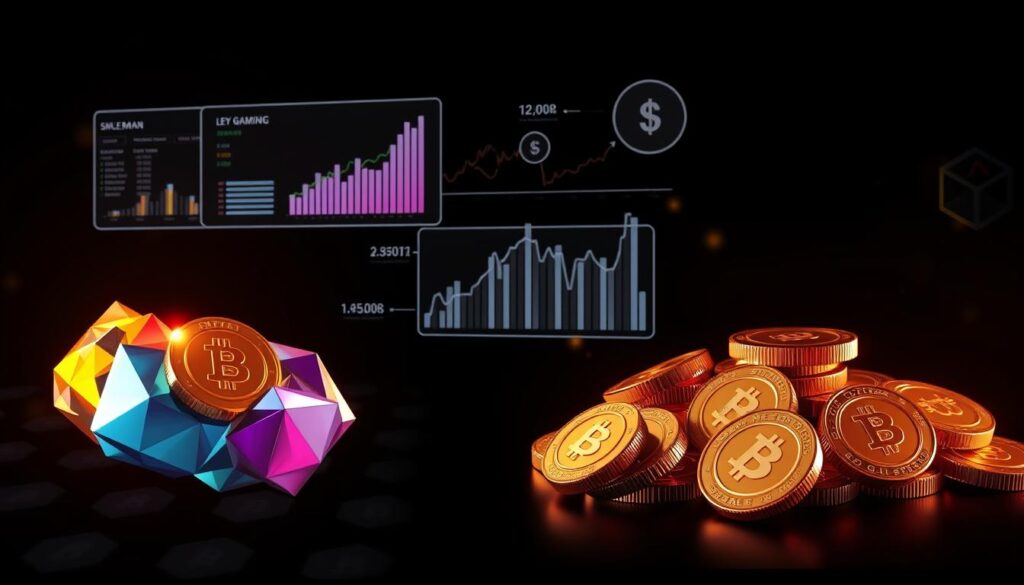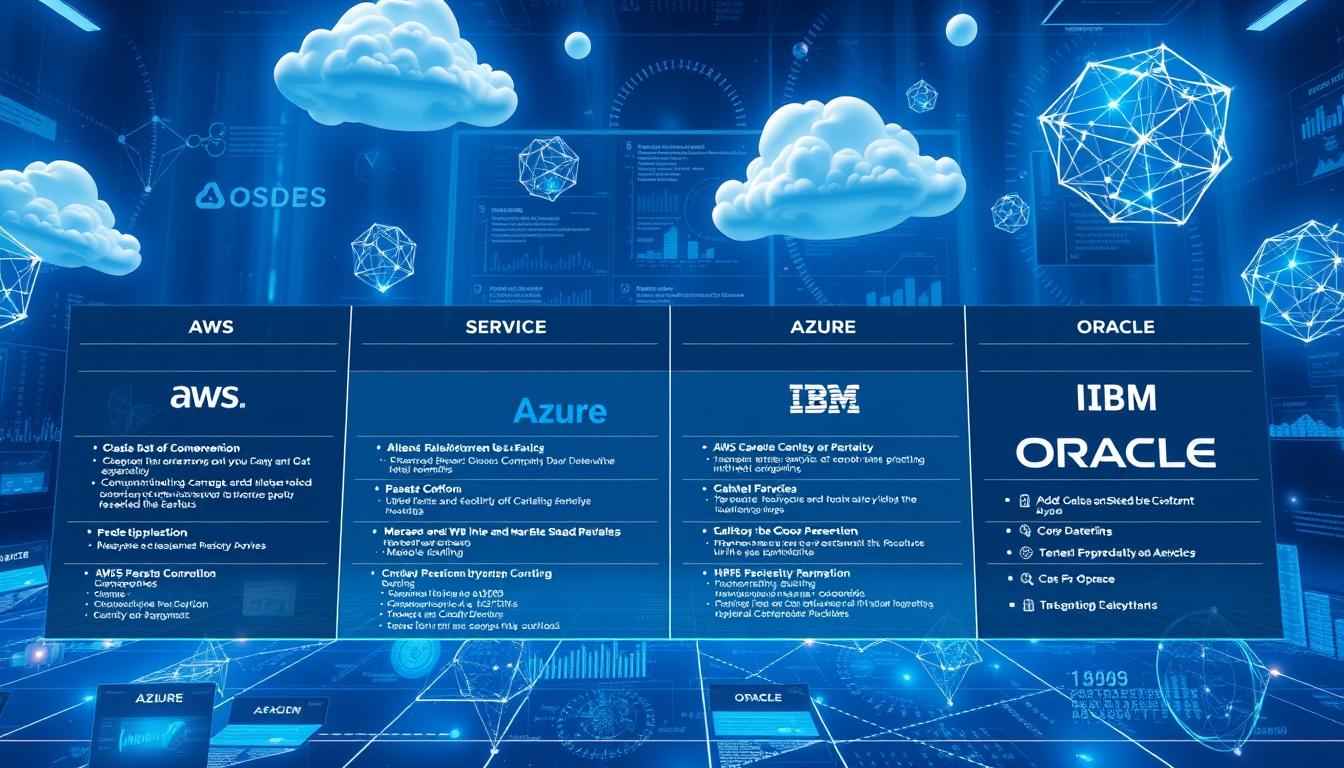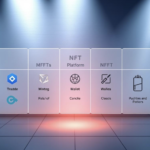Now Reading: Top 10 altcoins to invest in for long term growth
- 01
Top 10 altcoins to invest in for long term growth
Top 10 altcoins to invest in for long term growth

This guide helps crypto investors evaluate value and potential in a volatile market by focusing on fundamentals that have supported steady growth over cycles.
You’ll see established platforms like Ethereum and Solana alongside newer projects with specific use cases, tokenomics, and community momentum. The list balances large market cap coins and earlier-stage assets with asymmetric upside.
Price narratives differ: leaders show mature adoption and liquidity, while emerging coins offer niche solutions and higher variance. A disciplined framework makes it easier for investors to weigh risk and reward.
Supply dynamics, distribution, and staking affect liquidity and price discovery. Community strength, developer activity, and partnerships often precede broader market performance for platforms and blockchains.
This guide previews practical sections on risk management, secure wallet setup, and reading on-chain signals. For a deeper set of project picks and methodology, see 100x altcoin research.
Key Takeaways
- Focus on use cases and tokenomics, not hype.
- Balance established coins with selective early-stage projects.
- Watch supply, staking, and distribution for price impact.
- Developer activity and community often lead market moves.
- Use risk controls, secure wallets, and on-chain signals.
Why long-term altcoin investing matters in a fast-moving crypto market
In a market where daily swings grab headlines, a patient thesis finds the signals that matter. Short-term volatility can obscure real adoption and utility that develop slowly across networks.
Focus on stability and scalability. Mature developer ecosystems, enterprise integrations, and thriving dapps drive sustainable adoption. Protocols like Ethereum, Solana, and Arbitrum show how scalability upgrades unlock new user experiences and use cases.
History shows that market cycles reward investors who hold through downturns when projects deliver real utility. Rising active addresses and steady developer activity often precede price moves for quality coins.
- Demand grows from better UX, integrations, and mainstream interest.
- Infrastructure coins with defensible moats retain relevance across cycles.
- Diversifying across complementary projects balances idiosyncratic risk.
In short, a fundamentals-first framework helps investors separate signal from noise. That discipline improves chances of capturing long-term growth as adoption, demand, and network effects compound over multiple market cycles.
How we chose: use cases, tokenomics, adoption, community, and market cap
Selection began with which protocols solve clear, repeatable problems users face today. We first screened projects by real-world use cases and whether those uses can sustain demand across cycles.
Use cases and real-world utility that drive sustained demand
A useful project solves a tangible problem: payments, data oracles, or faster settlements on a blockchain. Practical utility attracts users and partners, which supports steady adoption and healthier price discovery.
Tokenomics, supply, staking rewards, and emission schedules
We weigh total and circulating supply, emission schedules, and vesting. Balanced staking rewards help secure networks without creating excessive sell pressure. Examples like SNORT, BEST, and T6900 show how defined allocations and staking mechanics shape holder behavior.
Liquidity, partnerships, developer activity, and ecosystem growth
Market cap and fully diluted cap give valuation context, while liquidity depth and exchange access matter for execution. Partnerships validate utility and expand distribution channels.
- Developer activity and roadmap delivery signal real product progress.
- Community engagement fuels retention and grassroots marketing.
- Audited contracts and locked liquidity reduce perceived risk (T6900 is an example).
Top 10 altcoins to invest in for long term growth
A balanced portfolio pairs platform stability with selective exposure to innovative token models. Below we group resilient leaders and high-upside projects so investors can match exposure to risk appetite.
Established leaders for resilience and scalability
Ethereum (ETH), Solana (SOL), and Dogecoin (DOGE) anchor many portfolios due to mature ecosystems, deep liquidity, and steady adoption. These networks offer clearer paths to durable value through developer activity, dApps, and payment use cases.
High-potential emerging projects with strong narratives
Smaller projects like SNORT, HYPER, BEST, T6900, BTCBULL, SUBBD, SPY, and FEPE target specific cases: trading automation, faster BTC transfers, multi-chain wallets, meme staking, creator tools, POS payments, and AI gaming. Their upside depends on execution and adoption rather than sheer market cap.
- Leaders = lower volatility, broader ecosystem support.
- Emerging = higher potential but greater liquidity and price risk.
- Combine both cohorts to balance stability and upside exposure.
Note: Assess market cap, token distribution, and liquidity before sizing positions. Ongoing monitoring of adoption and roadmap milestones helps validate the investment thesis.
Established networks with durable moats: Ethereum, Solana, and Dogecoin
Networks with broad utility and active communities often sustain value across cycles. These three projects represent different paths to durability: platform depth, raw throughput, and widespread cultural adoption.

Ethereum (ETH): dApps, DeFi, NFTs, and PoS security
Ethereum anchors a massive ecosystem of dapps and defi protocols like Uniswap and major NFT marketplaces. Its migration to PoS in 2022 cut emissions and improved sustainable transaction security.
That combination of developer activity and partnership adoption supports steady network growth and price resilience.
Solana (SOL): high throughput, low fees, vibrant DeFi/NFT ecosystem
Solana offers notable scalability and fast transactions via PoH+PoS, enabling consumer apps and NFT markets such as Magic Eden.
High throughput and improving development tooling help projects scale, pushing Solana’s market cap into major platform status and supporting continued adoption.
Dogecoin (DOGE): low-fee microtransactions and broad brand recognition
Dogecoin serves as a low-fee coin for tipping and small payments, backed by a large, active community and notable merchant acceptance.
Its uncapped supply influences token dynamics and price outlook, but community-led use and real integrations sustain network activity and stability.
- Compare: Ethereum’s platform role, Solana’s scalability, and Dogecoin’s payments niche complement each other.
- Allocation to these networks can anchor a portfolio seeking resilience and scalable infrastructure.
- Watch market cap, supply dynamics, and ongoing development as adoption catalysts.
Interoperability, data, and enterprise-ready platforms to watch
Bridging real-world data and multi-chain liquidity is a major design focus for next-gen platforms. Networks that secure external feeds, enable cross-chain workflows, and win enterprise partnerships will reduce fragmentation and improve user experience.
Chainlink (LINK): decentralized oracles connecting on-chain to real-world data
Chainlink functions as a critical technology platform that supplies dependable data to smart contracts. At $15.07 with a market cap near $9.61B, Chainlink underpins many DeFi and oracle-dependent use cases.
Token design and node incentives matter for data integrity. LINK’s model ties rewards to service quality, which helps secure feeds and sustain demand from developers.
Polkadot (DOT): parachains and cross-chain interoperability
Polkadot uses a relay chain and parachains to let specialized projects interoperate. Priced around $4.88 and a market cap near $7.59B, DOT supports growing ecosystem development and cross-chain liquidity.
Parachain slots and shared security enable diverse modules to scale without fragmenting the broader market.
VeChain (VET): supply chain transparency and enterprise adoption
VeChain targets traceability and transparency for businesses. At $0.028 and a market cap near $2.42B, VET’s partnerships with industry players drive practical adoption and real-world use.
Investors should watch ecosystem maturity, on-chain usage, and integrations as indicators of sustained interest and potential price recovery.
- Focus on ecosystem activity, integrations, and on-chain metrics.
- Compare market cap versus real utility when evaluating valuations.
- Watch token supply mechanics that affect security incentives and network demand.
Scaling Ethereum and Web3 UX: Arbitrum and TON
Bridging Ethereum’s liquidity with high-throughput rails improves real-world UX for dapps. Two different approaches — layer-2 rollups and a high-throughput layer-1 — aim to reduce fees and speed transactions while expanding use cases.
Arbitrum (ARB) uses optimistic rollups that bundle transaction data off-chain and post proofs on Ethereum. This lowers gas costs and speeds up throughput for DeFi and dapp users. At a price near $0.42 and a market cap around $1.85B (ATH $2.40 as of Feb 27, 2025), Arbitrum benefits when liquidity and protocols migrate to L2s.

Toncoin (TON) underpins The Open Network and targets high throughput and wide distribution. Priced near $3.37 with a market cap about $17.28B (ATH $8.24 as of Feb 27, 2025), TON gains from Telegram-linked reach that can accelerate adoption and UX improvements for mainstream users.
- Arbitrum: lower transaction costs, stronger DeFi liquidity, easier dapp migration.
- TON: native throughput, consumer-focused distribution, fast onboarding potential.
- Measure adoption by tracking transaction counts, unique addresses, and protocol integrations.
Both platforms broaden utility by integrating with Ethereum and other chains. Monitor developer activity, partnership announcements, and network metrics as signals for sustained market adoption and long-term price potential.
Payments and PoS experiences: SpacePay and Best Wallet
SpacePay and Best Wallet show how payments and secure custody can turn crypto into everyday utility.
SpacePay (SPY)
SpacePay integrates with Android POS devices to enable in-store crypto transactions and instant fiat conversion. Merchants receive settlements immediately, which cuts volatility risk and simplifies accounting.
Low fees and wide compatibility matter. SpacePay supports 325+ wallets and charges a 0.5% fee, improving the user experience and encouraging more transactions at checkout.
SPY has a fixed supply of 34B and allocations for presale, marketing, ecosystem, rewards, reserves, and development. Staking incentives advertise up to 1,200% APY, but investors should assess sustainability and emission pressure.
Best Wallet (BEST)
Best Wallet is a multi-chain wallet supporting 60+ blockchains with staking, governance, and fee-reduction mechanics. Its presale raised $13.6M+, and total supply is 1B with clear allocations (airdrop 10%, staking 8%, development 25%, marketing 35%, listings 10%, community 7%, treasury 5%).
Utility and token design give BEST practical value: staking rewards (up to 138% APY), governance rights, and lower fees for active holders. These features help drive platform adoption beyond speculation.
- Watch transaction volumes and active users as early adoption signals.
- Check liquidity venues and price gaps between presales and listings.
- Prioritize wallets and platforms with audits and strong custody options.
Summary: Both projects aim to move crypto into daily use. Their tokens fit a diversified portfolio that favors utility and network effects, provided investors review staking sustainability and security practices.
Speculation-meets-utility: meme, gaming, and AI-driven projects
Speculation and utility increasingly overlap where meme culture, gaming, and AI create real user loops. These projects blend playful narratives with features that encourage repeat use and token utility.
Fantasy Pepe (FEPE) merges AI-managed fantasy football with NFTs and staking. Total supply is 125B with 15% reserved for staking and presale tiers built to sell fast. That mix creates sticky engagement loops and diversified token utility beyond pure meme status.
BTC Bull Token (BTCBULL) ties token events to BTC price milestones, offering staged airdrops and burns at $150k/$200k/$250k levels and burns at $125k/$175k/$225k. Total supply is 21B and early staking can reach ~106% APY, but heavy marketing allocations mean investors should watch spend efficiency.
SUBBD (SUBBD) focuses on AI creator tools and token-gated content. With a 1B supply split across marketing (30%), development (20%), liquidity (18%), and community rewards (7%), it aims to drive recurring demand from creators and fans.
- Watch supply mechanics and staking rewards — these shape perceived value and sell pressure.
- Track adoption via active wallets, on-chain interactions, and content participation.
- Partnerships and integrations act as credibility signals for AI and gaming projects.
Automation and speed on Solana: Snorter Bot and Bitcoin Hyper
New tooling on Solana speeds microsecond order flows and widens practical use cases beyond speculation. These projects pair automated execution with faster settlement rails to improve user outcomes and broaden utility.
Snorter Bot (SNORT)
SNORT is a Solana token powering a Telegram trading bot with millisecond execution, anti-MEV protections, and scam scanning. The automation technology reduces slippage and front-running, making trades more predictable on a high-speed network.
SNORT has a fixed supply of 500M with allocations across development, marketing, liquidity, staking, and treasury. Staking supports network security and aligns holders with long-term development and steady growth.
Bitcoin Hyper (HYPER)
HYPER operates as a Solana-based Layer 2 that processes BTC off-chain and settles on Solana. That design enables faster transactions with lower fees than L1 Bitcoin and supports cross-chain payment narratives.
HYPER’s total supply is 21B. Presale incentives included a 650% APY staking window and allocations for development, marketing, ecosystem rewards, liquidity, and the team. The presale raised $1.7M by June 6, 2025 at $0.0118.
- Adoption catalysts: Telegram UX for SNORT and BTC interoperability for HYPER.
- Watch on-chain metrics — transaction counts and active users — and monitor liquidity and roadmap execution.
- These are higher-beta crypto projects that complement established holdings when sized carefully.
Speculative momentum plays: TOKEN6900 and beyond
High-energy meme projects often spark sudden rallies when community attention and listings align. TOKEN6900 (T6900) launched a presale on June 30, 2025 and raised $150,000 in four days toward a $5M hard cap.
TOKEN6900 (T6900): meme coin economics, staking APY, and Uniswap liquidity
Market dynamics for T6900 depend on social traction, rapid exchange access, and listing visibility. Presale price sat at $0.006425 with a fixed supply of 930,993,091.
Supply design emphasizes community ownership: 80% presale, 10% DEX liquidity locked for 12 months, 5% staking, 5% marketing/airdrops, and 6,900 tokens reserved for developers.
Staking headlines an estimated APY of 3,519%. That yield can boost short-term demand but raises questions about sustainability and vesting impact on near-term prices.

- Uniswap listing is planned and will be tracked on DEXTools and DexScreener, which can amplify momentum.
- Audits by Coinsult and SolidProof improve transparency but do not eliminate execution risks.
- Volatility is high; smart contract, liquidity, and market shocks are real risks for traders and investors.
Positioning: treat momentum plays as tactical allocations, size positions prudently, and use entry/exit rules tied to social and volume signals. Monitor unique holders, volume, and on-chain activity to judge whether rallies are sustainable.
Key metrics investors should track: price, market cap, supply, and liquidity
Objective metrics help compare networks and spot early signs of sustained demand.
Market cap vs. fully diluted cap: market cap (circulating supply × price) gives a snapshot of current valuation. Fully diluted cap uses total supply and shows potential future valuation if all tokens unlock. Compare both when sizing positions across assets and platforms.
Circulating vs. total supply: track emissions, vesting schedules, and burns. High future issuance can pressure price even if current cap looks cheap. Examples include fixed supplies like SNORT and T6900 or milestone burns such as BTCBULL that change scarcity.
TVL, active addresses, and on-chain volume
DeFi metrics like TVL show protocol stickiness. Active addresses and on-chain transaction counts signal real user adoption across blockchains.
Liquidity, execution, and technology health
Depth across DEXs and CEXs, slippage, and daily volume affect execution risk. Also weigh audits, release cadence, and developer activity as part of technology maturity.
- Compare cap and FDV when evaluating valuation.
- Watch burns, staking emissions, and vesting dates.
- Track TVL, active users, and transaction throughput.
- Assess liquidity depth and protocol audits before entry.
- Monitor cross-chain integrations that expand market access.
Practical checklist: supply profile, market cap, liquidity, real usage, developer activity, and governance progress. Use these together to judge whether a crypto platform can sustain adoption and practical use over time.
Risk management for long-term crypto investments in the United States
Managing downside risk is as important as spotting upside catalysts when holding crypto in the United States. A simple, repeatable plan reduces emotional trading and keeps focus on fundamentals.

Volatility, regulatory shifts, and custody considerations
Regulation can change access and protections. US policy moves affect listings, exchange rules, and disclosure. Investors should track SEC guidance, tax updates, and state licensing that reshapes market structure.
Choose custody based on goals. Self‑custody with a hardware wallet lowers counterparty risk but requires careful recovery phrase management. Institutional custody adds convenience and insurance trade-offs.
Diversification, DCA, and catalyst calendars
Position sizing and rebalancing limit drawdowns. Set maximum loss per asset and rebalance periodically to lock gains and control exposure to single protocols.
Dollar‑cost averaging smooths entry points and reduces timing risk. Use a calendar of network upgrades, listings, and partnerships to plan larger buys around asymmetric events.
- Spread exposure across infrastructure, payments, and AI/gaming to reduce idiosyncratic risk.
- Document an investment thesis and clear exit criteria for each asset.
- Monitor platform risks: smart contract exploits, rug pulls, and centralized counterparty failures.
Tax and record keeping matter. US investors must track cost basis, holding periods, and reportable events. Keep exchange records and receipts for accurate filings.
Finally, evolve your risk framework as the market and your goals change. Regular reviews keep protection aligned with capital, time horizon, and comfort with volatility.
How to store and stake your assets safely for long-term growth
Secure custody is the foundation of any long-term crypto plan. Start with a hardware wallet for cold storage and keep recovery phrases offline. Write seeds on metal or paper and store copies in separate secure locations.
Hardware wallets, recovery phrases, and 2FA best practices
Enable 2FA on exchanges and software accounts and rotate strong passwords regularly. Never access accounts over public Wi‑Fi and verify addresses before sending funds.
Staking, yield strategies, and avoiding smart contract risk
Staking rewards can boost returns but carry trade-offs. Choose reputable validators, split stakes across multiple nodes, and compare self‑staking versus custodial or liquid options.
Assess yield platforms by reviewing audits, bug bounties, and protocol track records. Factor in withdrawal delays, slashing rules, and counterparty exposure before committing funds to any platform or DeFi protocol.
- Practice wallet hygiene: firmware updates, address checks, and phishing awareness.
- Spread risk: diversify validators and limit single‑platform exposure.
- Checklist for US investors: hardware wallet, 2FA, offline backups, audited contracts, and liquidity planning.
Security must scale with portfolio size and complexity. Regular reviews keep your technology and custody aligned with changing risks.
When to buy: market cycles, presales, and timing entries
Identifying where the market sits in a cycle makes timing entries more deliberate and less emotional. Use simple phase cues: low-volume accumulation, rising volume and price during expansion, topping distribution, and sharp declines in contraction. These heuristics help you size positions and plan exits.
Presales offer lower entry prices and allocations, but they carry execution risks: delayed listings, vesting overhangs, and thin post-listing liquidity. Treat presales as higher-risk allocations within a defined investment plan.
Practical execution and order tactics
Trade where liquidity supports your size: Uniswap on Ethereum, Raydium on Solana, and PancakeSwap on BNB Chain are common venues today. Watch liquidity windows; low depth increases slippage and partial fills.
- Use laddered entries with limit orders or DCA to reduce the effect of short-term volatility.
- Plan partial fills and re-entries rather than all-or-nothing execution when liquidity shifts fast.
- Align buys with clear catalysts (mainnet launches, listings, partnerships) and avoid crowded euphoria near events.
Monitor supplemental indicators like funding rates, on-chain flows, and sentiment. These help refine timing but should not replace strong fundamental analysis.
Risk budget each position, set protective stops or invalidation rules, and avoid chasing momentum without a plan. Patience pays: the best crypto entries often appear when interest is scarce and narratives are unfashionable.
For a deeper look at cycle timing and practical entry ideas, see this primer on navigating market phases and opportunistic windows: altcoin season playbook.
Your next steps to position for long-term crypto growth
Your next steps start with a short list of the best crypto candidates that fit real user needs, clear token design, and ecosystem traction.
Build a core around proven platforms like Ethereum and Solana, then add selective projects (SNORT, HYPER, BEST, SPY, FEPE) sized by conviction and risk.
Action checklist: set secure custody, write a thesis per asset, map catalyst dates, and track adoption signals — active users, integrations, and TVL.
Review allocations regularly, stake or join governance where it aligns with your plan, and document risk rules such as max loss and time horizon.
Keep tax records and compliance in mind. Stay disciplined: a thesis-driven process helps investors navigate cycles and compound returns for long-term growth.
FAQ
What criteria did you use to select these coins and networks?
We focused on concrete use cases, tokenomics, adoption metrics, active developer activity, market capitalization, and community strength. Projects with clear real-world utility, predictable supply or staking mechanics, growing liquidity, and meaningful partnerships received higher weight in our evaluation.
How do tokenomics and supply affect long-term value?
Tokenomics shape scarcity and incentives. Circulating versus total supply, emission schedules, staking rewards, and burn mechanisms all influence inflation and investor returns. Strong token models align user incentives and reduce downward pressure from excessive issuance.
Why is developer activity important for a project’s prospects?
Active development signals ongoing improvements, faster feature rollouts, and security updates. A vibrant developer community usually translates to more dApps, integrations, and sustained network usage, which supports long-term demand for the token.
How should U.S. investors manage regulatory and custody risk?
Understand U.S. regulatory guidance, use custodial services with clear compliance practices, and consider hardware wallets for self-custody. Keep records for tax reporting and prefer regulated exchanges when possible. Consulting a qualified attorney or tax advisor is prudent.
What on-chain metrics are most useful to track adoption?
Track TVL (total value locked), active addresses, transaction volume, and wallet growth. Liquidity on major exchanges, staking participation, and developer commits also offer insights into real-world adoption and network health.
How can I reduce volatility and downside risk in a crypto portfolio?
Use diversification across sectors (L1s, oracles, payments, interoperability), dollar-cost averaging (DCA), position sizing, and set clear entry and exit rules. Maintain a portion in established networks and limit exposure to highly speculative tokens.
Are meme, gaming, or AI-driven tokens viable long-term holds?
Some can evolve into utility-driven ecosystems if they add real use cases like in-game economies, token-gated content, or AI services. However, many remain speculative; prioritize projects with clear roadmaps, active communities, and measurable product-market fit.
How important is interoperability between blockchains?
Very important. Cross-chain bridges, parachain architectures, and oracle integrations enable liquidity flow and composability. Projects that solve secure, low-cost interoperability can unlock broader adoption and network effects.
What role do partnerships and enterprise adoption play?
Partnerships validate technology and open distribution channels. Enterprise integrations drive real transaction volume and recurring revenue for ecosystems like supply-chain platforms or data oracles, strengthening long-term token demand.
How should I approach staking and yield strategies safely?
Use reputable validators, diversify staking providers, and avoid high-yield offers that require risky smart-contract interactions. Understand lockup periods and slashing risks. For smart-contract staking, audit history and TVL give clues about safety.
When is it a good time to buy during market cycles?
Buying during consolidation or bear markets with a DCA plan often reduces timing risk. Presales can offer discounts but carry high execution risk. Focus on liquidity windows and avoid chasing rapid pump-driven entries.
How do I evaluate a new project’s community and governance?
Look for active, respectful communities across forums and social channels, transparent governance proposals, and consistent voter turnout. Healthy governance includes clear improvement processes and on-chain or off-chain mechanisms that align stakeholders.
What diversification rules should crypto investors follow?
Limit concentration in any single asset, allocate across sectors (infrastructure, payments, oracles, scaling), and keep a portion in stable assets. Rebalance periodically and avoid overexposure to highly correlated tokens.
How do I verify token supply and on-chain metrics?
Use blockchain explorers (Etherscan, Solscan), analytics platforms (Glassnode, CoinGecko, DeFiLlama), and audit reports. Confirm circulating supply, vesting schedules, and contract ownership before committing capital.
What are common red flags when researching a project?
Centralized token ownership, anonymous core team with no verifiable track record, no audits, opaque tokenomics, aggressive marketing without product milestones, and suspicious contract functions like unlimited minting are all warning signs.
Can hardware wallets and 2FA fully protect my assets?
Hardware wallets significantly reduce custody risk by keeping private keys offline. Combine hardware wallets with strong passphrases, secure backups, and two-factor authentication on exchange accounts for layered protection. Never share seed phrases.
How do liquidity and exchange listings impact price stability?
Higher liquidity and listings on reputable exchanges reduce spreads and slippage, making price discovery fairer. Thin liquidity or single-exchange listings make tokens prone to manipulation and higher volatility.
What is the role of oracle solutions like Chainlink?
Oracles connect on-chain contracts to real-world data like prices, weather, or identity. Reliable oracle networks enable complex DeFi primitives, insurance products, and enterprise integrations by providing tamper-resistant feeds.
Should retail investors hold both large-cap networks and smaller projects?
Balancing blue-chip networks (for stability and utility) with selective smaller projects (for higher upside) suits many long-term strategies. Adjust allocations based on risk tolerance, time horizon, and research depth.
How often should I review my crypto holdings?
Quarterly reviews are a good baseline to reassess fundamentals, roadmaps, and market conditions. For active strategies, monitor weekly. Rebalance when allocations drift significantly or when fundamental changes occur.
Where can I learn more about technical and fundamental analysis for crypto?
Reputable education sources include developer docs, whitepapers, blockchain explorers, analytics sites, and financial literacy platforms. Combine on-chain metrics with macro and technical indicators for a fuller picture.















